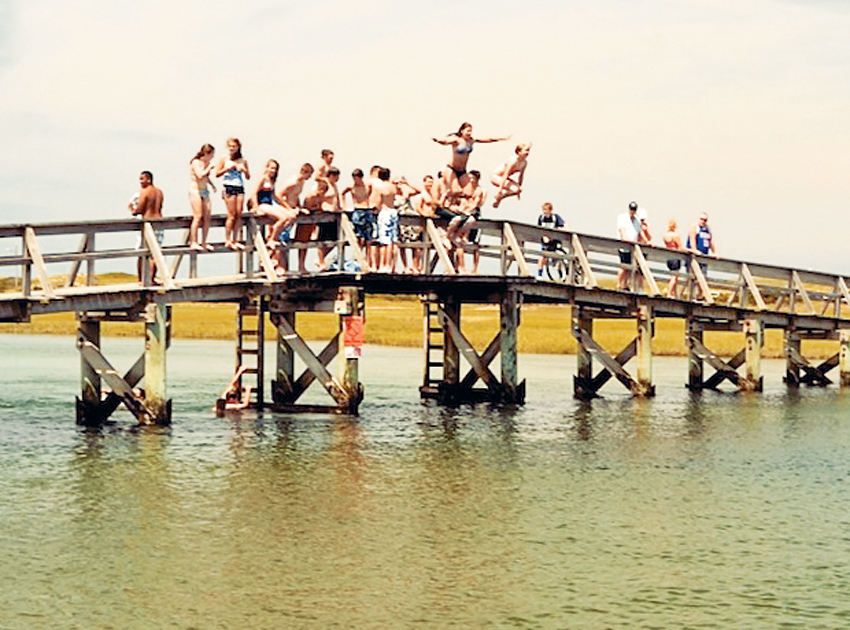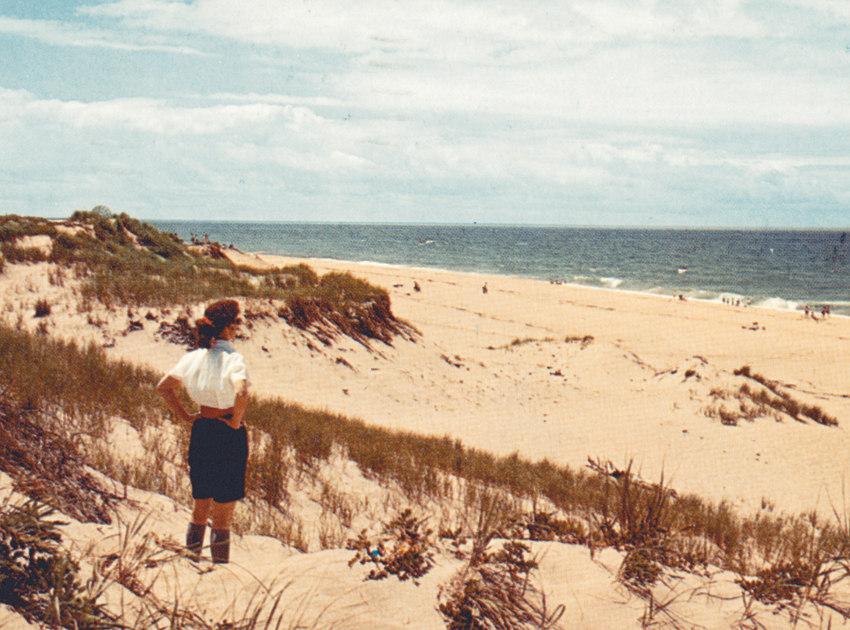Summer on the Cape

Photo by Holly Ladd
Night Swimming
The pond is black. The quiet moonlight has come from far away to join us, and slips across the surface of the still water. I wade in slowly. Not just me, everybody. A pond at night seems dangerous.
Fear of snakes is part of it. And fear of snapping turtles, dislike of the way our feet slide on the slimy bottom or how long strands of algae cling to our bare legs. The uneasiness of pond entry is important, the hazing initiation to what will become the most memorable moment of summer, every summer—this one, the last one, and all the summers years ago.
In the dead gloom of winter, even more than I dream about being drenched in the hot sharp sunlight of the Cape, I dream about night swimming.
My friends are behind me, removing their clothes, leaving them on the damp deck. My husband is back there too, and sometimes our son. Nobody talks until we’re all in the dark water, until we’ve become a string of heads on the surface moving slowly through the soft, salty night air, when we speak in low whispers.
“Look at the moon.”
“Is it full?”
“Mmmmmm.”
“Full on Wednesday.”
“Sometimes I wonder about snakes.”
Growing up in California, we swam at the beach at night, when the phosphorescence in the ocean made the waves glow as they broke on us. Or we swam in chlorinated swimming pools with bright underwater lights and dead moths floating on the surface. The dark ocean is too cold for night swimming on the Cape. So we’re drawn to the warm pond, with its sweet-scented fresh water. To get there, we walk through the woods, down a pathway so thickly carpeted with moss our bare feet bounce on it.
I won’t say which woods, or which pond. There are more than 365 of them on Cape Cod, according to the National Park Service. Finding your favorite, and holding the memory of it inside you all winter long, is part of it. Their names are humdrum and prosaic: Pilgrim, Long, Sheep, Sand, Round, Black, Gull. Their names lowball their magic, like everything else on the Cape—an attempt to hide and not show off.
After 20 minutes or so, without any spoken coordination, all of us begin swimming to shore, to the deck where our dry clothes—and maybe a towel to share—are waiting. Somebody remembers the R.E.M. song and begins to sing it, and then, softly, we all join in: “Night-swimming deserves a quiet night.” And so it does.
—Martha Sherrill is a native Californian and former Washington Post staff writer whose fifth book, a memoir about her family’s move to Cape Cod 10 years ago, will be finished this summer and out the next.


Photo by Maribeth Connolly Graf
The Sandwich Boardwalk
I’m what you call a wash-ashore. I didn’t move here until ’83, so I didn’t jump off the boardwalk when I was kid. But my favorite memories are of people and families doing just that. There are 1,800 boards, and stories from each one. “It all started here” is a board that was purchased by a now-elderly woman who loved the boardwalk, especially in the moonlight. “Don’t tread on me” is from one of the town leaders who had a reputation for correcting all injustices. They are all individual expressions, but together, they create a picture of a community.
—Dean Coe, founder and chairman, Sandwich Boardwalk Reconstruction Committee.


Photo via CardCow.com
Provincetown’s Dunes
The solitude of the dunes and tidal flows is what I love most of all. Just sitting in the lagoons as the tide turns, and feeling the moon pull the water past your body, is Provincetown for me. A July afternoon or September dusk on a distant beach with a book and a prayer. What else could a man want? As Thoreau put it, here you can “put all of America behind you.” Given what I do every day, it keeps me sane and heals and centers me again.
—Andrew Sullivan, who spends his summers in Provincetown, is the editor of The Dish.

The Highland Light
In the lighthouse, summer is a quiet time. You can see whales—almost always humpbacks this time of year. There are some 500 shipwrecks under the water as well. When you stand on the Head of the Meadow Beach, you can easily swim out to some of them. I’ve done it millions of times. My grandpa taught me how to dive off the Frances—but it has barnacles and sharp pieces, so you have to come in from downcurrent. Farther on is the Somerset, a 64-gun British ship that shows only once in a while, and only at low tide. It was the ship that shelled Bunker Hill, the one that Longfellow wrote about in The Midnight Ride of Paul Revere.
I’ve been going to the lighthouse since I was a little guy—in the old days the lighthouse would be open because the Coast Guard was running it. And if they saw you come in with long, sad eyes, and you asked to go up, they’d let you. I’m 77 now, but I first climbed with my grandfather, and I was scared half to death. I was told there was a ghost of a lighthouse keeper and his little girl. I’m still afraid a little bit. I’m probably the only lighthouse guy with a fear of heights. I’ve been haunting the lighthouse ever since. But I’m not dead yet, so it doesn’t count.
—Daniel Sanders, president of the Highland Museum & Lighthouse.

